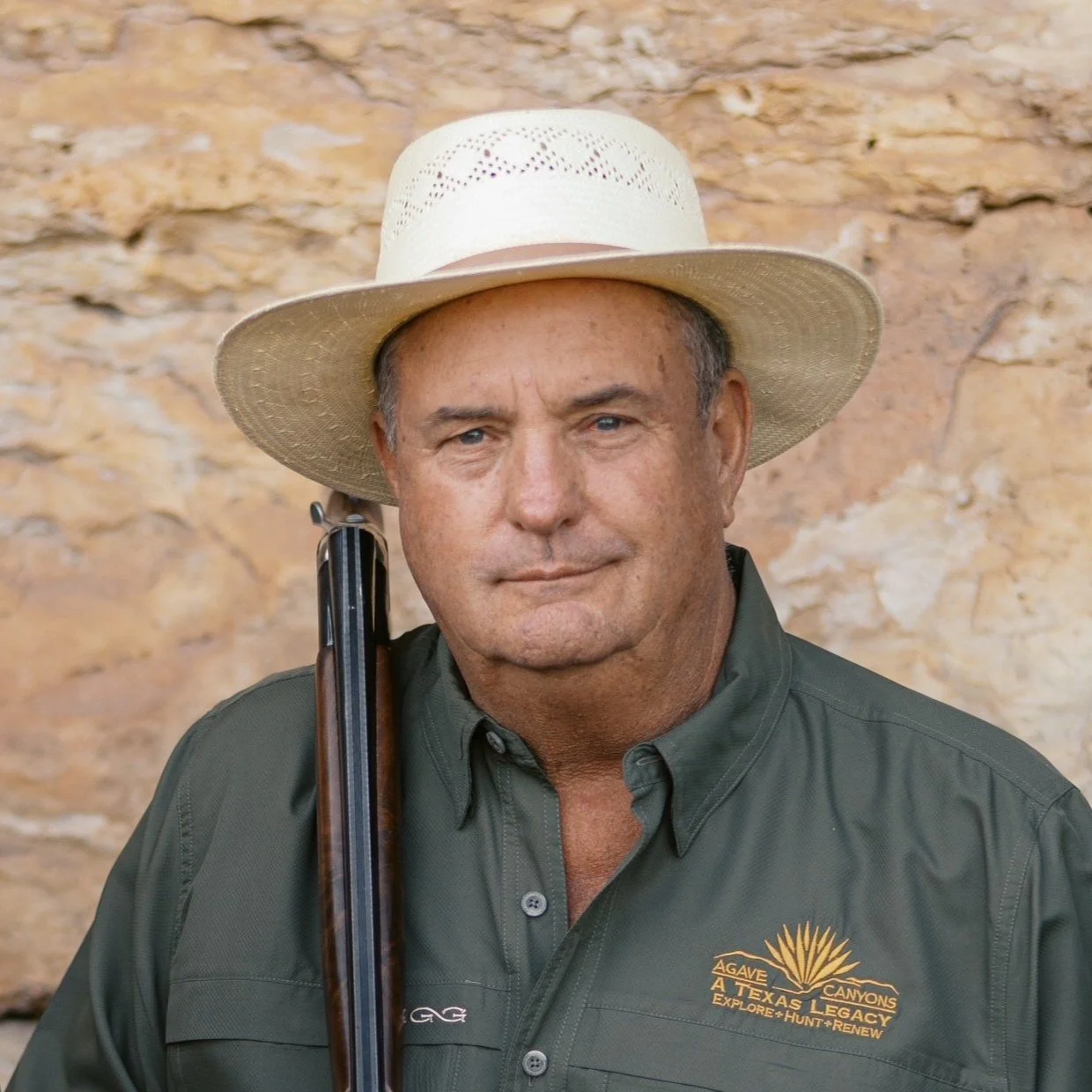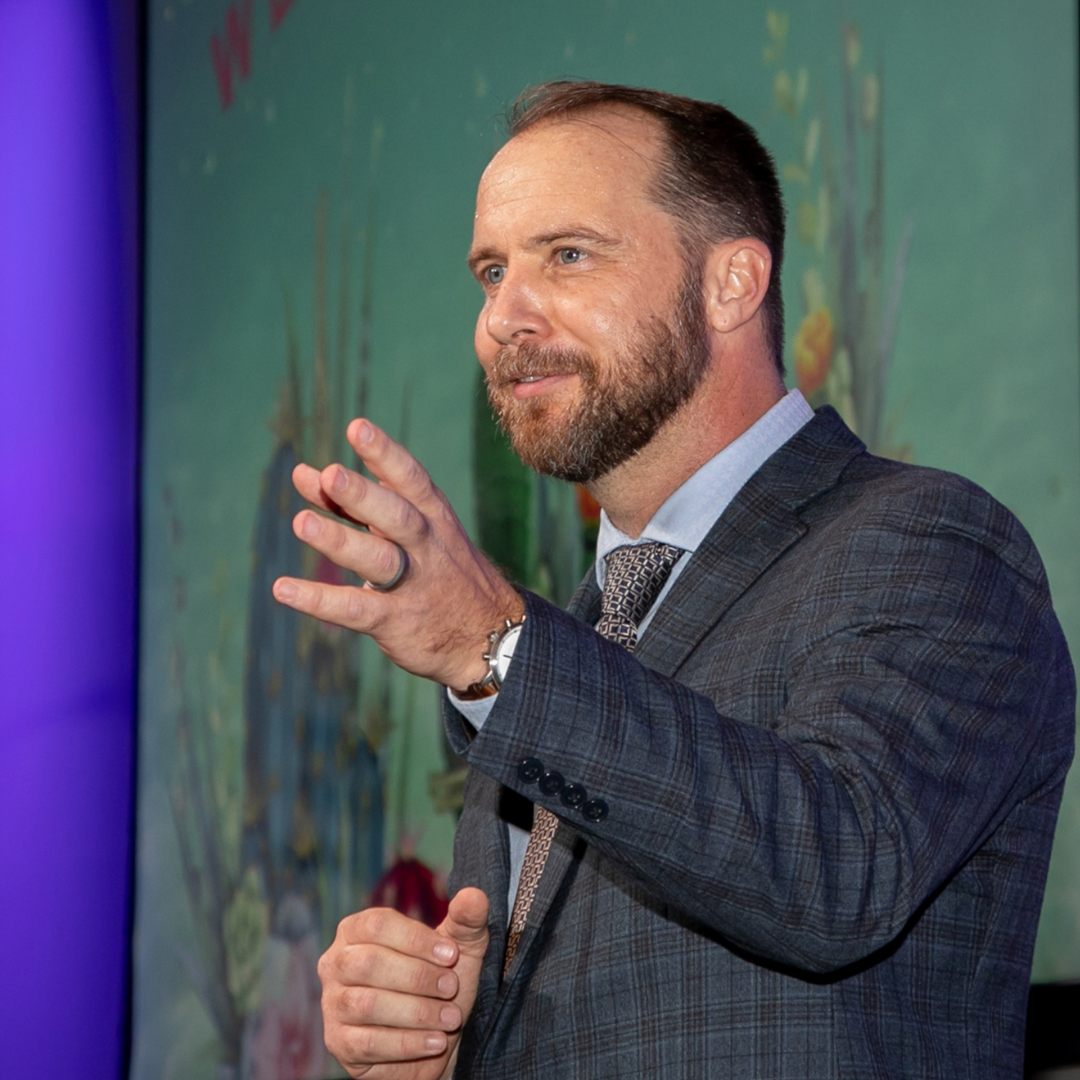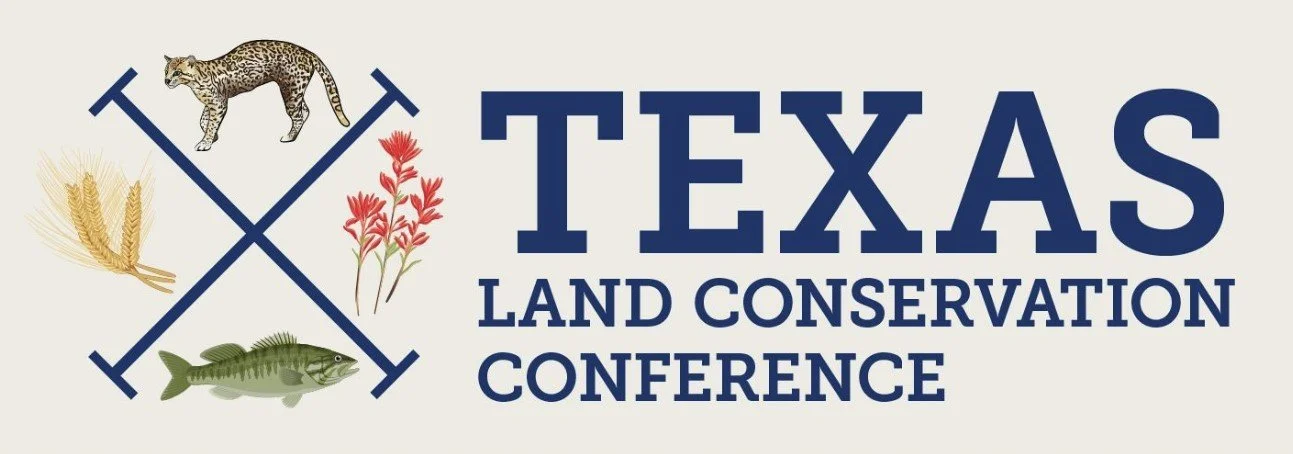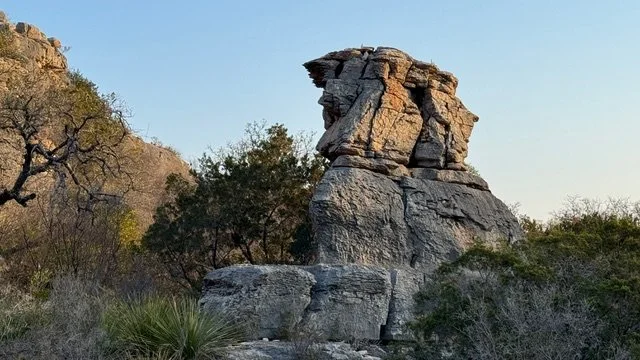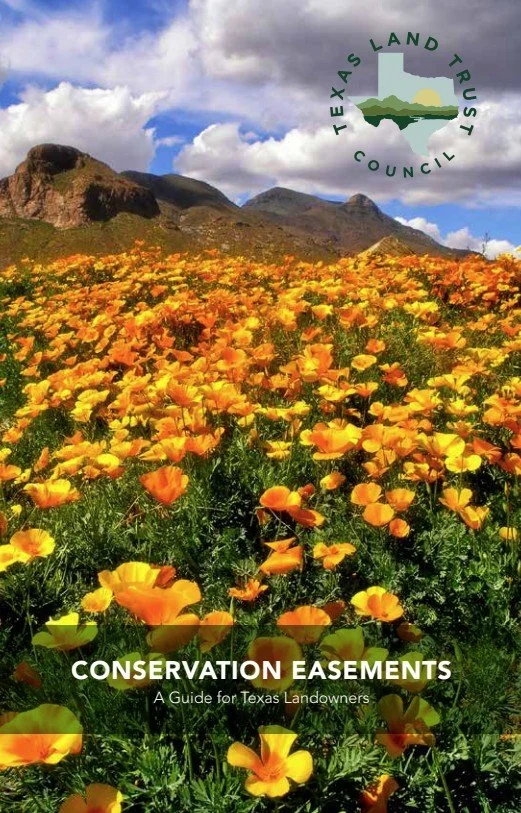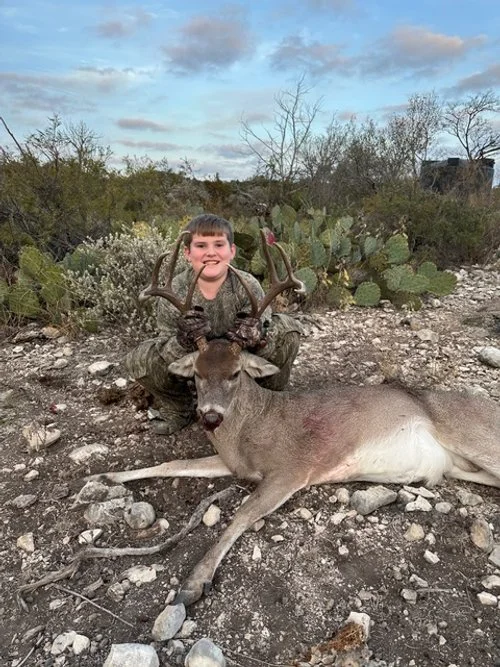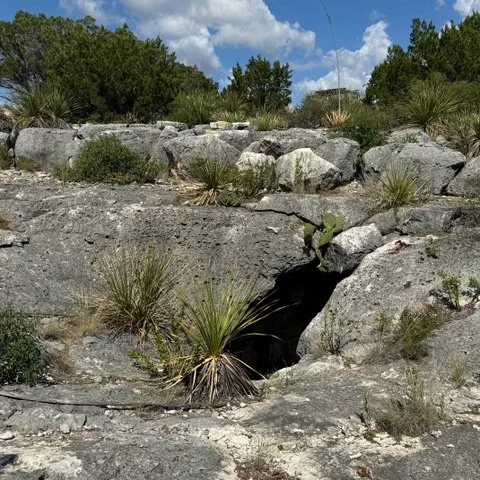A Landowner’s Conservation Easement Journey in the Devils River Basin
In the rugged heart of Val Verde County, landowners Mark and Renea Mohr have invested in a future rooted in heritage, stewardship, and conservation. In a recent conversation with Devils River Conservancy’s Executive Director Romey Swanson, Mark shared his and Renea’s journey placing the 4,423-acre Agave Canyons Ranch under a conservation easement with the Texas Land Conservancy—offering invaluable insight for landowners considering the same path, both within and beyond the Devils River Basin.
Mark Mohr, Landowner
Agave Canyons Ranch
Romey Swanson, Executive Director
Devils River Conservancy
To start the conversation, can you tell me more about Agave Canyons Ranch—it’s history, significant features, and what makes it special to you and Renea?
Mark Mohr: Agave Canyons Ranch, according to the folks at the Shumla Archaeological Research & Education Center, may be approaching 4,500 years for its first known Indian artifacts…so it’s been inhabited for a long time.
Where the Edwards Plateau meets the Chihuahuan Desert, we see, in terms of topography and environment and ecosystem, a great situation where two major drainages known as Big Satan Creek and Bluff Creek go directly into the Devils River. So those significant features…we need to preserve that drainage for water quality going forward for the river.
What makes the ranch special to us is both my wife and I are native Texans, and we’re extraordinarily proud of our land’s history…the amount of tenacity that those who preceded us have had in occupying the land and the spirit that goes with it is very special and worth preserving going forward. It’s incumbent upon us to go ahead and conserve lands for our grandchildren and their grandchildren.
Romey Swanson: Land in Texas is being chopped up pretty aggressively. And we're seeing a record amount of fragmentation to the tune of over 1,000 acres per day, as we are also adding 1,000 people per day to the population through growth. But thankfully, there are lots of opportunities for conservation still existing out there.
I’m interested to hear more about what motivated you to pursue a conservation easement for Agave Canyons Ranch.
Mark: On a personal basis, Renea and I wanted to be able to make an impact, however small, however large, going forward to preserve the water rights, the hydrological aspects of the ranch, even though it's in a very dry arid area.
We wanted to be able to preserve the Indian art caves that we have and those features of the native Coahuiltecans from thousands of years ago.
And also, it dovetails into our estate plan, that we wanted to build something to enrich our heritage for our kids and our grandkids and the future generations…and to maintain the quality of that land going forward.
Romey: I love the element around estate planning and succession planning, and assuring your stewardship legacy moves forward with the land in a few years.
Yes, sir. Exactly. And on a personal side note, in the early 80s—I want to say it was the hunting season of 1981—we took a road trip from Comstock to Sonora on 163. And those particular days, it was absolutely bluebird weather, the river was absolutely gorgeous, and we got to spend a few minutes just admiring the river near Baker’s Crossing.
And I don’t know of a native Texan…if you sit there and watch the river, I don’t know that anyone who sees it, that it wouldn't have an emotional impact. I mean, it gets right to the core of being a Texan.
So, how did you initiate the process for the conservation easement? And what led you to select the Texas Land Conservancy as your partner?
Mark: Well, to go back several years ago, there was just one of those magazine articles that…I don't remember which magazine it was, but I think the title was, “Does a conservation easement fit you?” And so, reading the article—wow, it's interesting that you could create an easement, still maintain ownership, and preserve some or all of your land holdings.
Obviously, we were thinking about this when we purchased the ranch in May of ’22: Is this [property] a good candidate for a conservation easement going forward? Can we find a partner in the form of a land trust that would administrate the easement in a way that reflected our values that were important going forward?
We spent a lot of time, perhaps two years, we went to the Texas Land Trust Council annual meeting in Austin and that's where a lot of folks in the conservation easement industry all get together to have a three-day conference and exchange ideas. We met with a lot of different people and listened to different seminars, and after visiting with a number of professionals and also an endorsement of a really good friend of mine, Mike Petter…I have a great deal of confidence in Mike and since he's in this particular industry as well, I said, ‘hey, Mike, we're going to go ahead and put the ranch in some form of a conservation easement. If you were wearing my shoes, give me an idea what you would look for.’ And then let's try to find a land trust organization that reflects our goals and what we want to do and that we can work with.
Because when you're talking about putting a conservation easement on your property, whether it's all of your property or a portion of your property, the key word is all going forward in perpetuity…while I'm on this earth for, let's say, another 20 years, I need to make sure at least for the next 20 years that there's some folks that our values align with, that we can talk with. And then going forward from that is make sure that those organizations will be around to reflect what you want going forward.
And I have a great deal of confidence in the Texas Land Conservancy and currently its administration with Mark Steinbach and conservation officer, Stephen Ramirez. We look at the land and we look at the features and we pretty much see the same thing, conversation in and conversation out. And that's our CE partner…that's it in a nutshell: they're available, they're responsive.
We set a six-month time frame on getting the easement started and finished. And the team that we assembled met those objectives.
After three months of background research to get going, and then we continued on by developing a team of consultants: our surveyor, our appraiser…your legal person or the firm that will basically be driving the bus on getting this easement created properly is very important. You need to be able to have confidence in those folks.
And then when those folks are assembled, they need to be able to work with your existing estate planning professionals, your tax professional, your accounting professionals, because all of these things will wind up working with each other to get to the finished product. So make sure that you're comfortable with the folks that you're engaging with this going forward.
Romey: I know that there's lots of concerns perhaps, maybe even some misconceptions, but there's nothing like having a relationship with a trusted partner to kind of help you walk through what it is and what it ain't. Mike, certainly as a landowner and an advocate for these sorts of tools, probably was one of the most impactful folks that you met as you were considering conservation easements…a friend, somebody that you trusted and respected. And I think that speaks volumes to the importance of landowners that have easements that have walked that path to share their story.
You have a hard decision to make here that is a lasting and enduring decision that will affect the management of this land moving forward, forever perhaps. And so, it's one that can't be taken lightly. And that makes it very important to have the right sort of partner to match your legacy vision and your personality, I think, too. And I'm guessing that that's why, in part, you chose to work with the Texas Land Conservancy, a good team to match you on those elements.
And thanks for giving the Texas Land Conservation Conference a shoutout.
One of the unique things about this was the degree of folks that are highly professional, and they have a great deal of zeal and energy for getting conservation easements and trusts in place that work, and work well.
I was overwhelmed by the degree of professionalism of the folks that attended that conference. And so anyone who's on the fence, perhaps, of wanting some additional information, I think it's $300 or $400 to register for the three-day conference. You get $30,000 or $40,000 worth of education for $300 or $400. So, it's money well-spent and time well-invested. So go to the seminar, meet with folks. Just go up and introduce yourself, say ‘hey, my name is Mark, and I'm looking to put the family property in some type of a conservation easement, so let's talk.’ And they'll talk to you…[laughter] for a long time.
To kind of follow up on that, the Devils River Conservancy is a member organization of the Texas Land Trust Council, along with many of our land trust partners across the state. We find that the Texas Land Trust Council is an incredible resource. They coordinate us. They're our umbrella organization, keeping all of our land trust partners aligned, just full of all sorts of resources.
Now, can you walk me through the process of your experience placing Agave Canyons Ranch under the conservation easement?
Mark: The first step is making several phone calls and to gauge the interest in the land trust organization, potential legal counsel, and I would say making a phone call to your existing level of consultants, your current estate planner or your tax professional, one or the other, to work together. What you want to do is gauge their interest to see if your values align with each other. You need to find someone that you can talk to and communicate well with, because there's a lot of intensive form work that goes into this type of thing.
Then, you go ahead and engage your legal counsel—that is going to be an extraordinarily important step in this process. Can you use your local attorney? Yes, sir. I would suggest that you consider visiting with one of those attorneys that specialize in conservation easements. The legal background of these things change quite frequently—either the legal code, the tax code, administrative codes of land use in different counties.
And then from that point, you can start using those folks to engage the land trust organization and your other consultants, such as the appraiser and the surveyor and the other consultants that you will ultimately engage to get the easement created on your property properly.
Romey: I think you're laying out that this is a very technical real estate transaction. You know, it's based on a hopefully mutually feel-good story of wanting to preserve and protect a landscape and a ranch. But it requires significant amounts of attention, oftentimes resources and good consultation, because as you're making decisions that may affect the management forever and your heirs, it's really, really critical that you are looking at it from a holistic vantage point and understand the accumulating effects of these decisions. That's not to scare anybody; it's just to say that stewardship requires this type of attention, and if you're motivated to do good stewardship, these are the sorts of things you can expect.
I also love to talk about how conservation easements are not the tool for everybody everywhere. It's a very specialized…it's a very good tool for the right circumstances and the right families.
Exactly right. This is going to be an intense process for, let's just say, a year for the most part. And you want to make sure that those professionals that you engage, that you can enjoy a good working relationship on an intense level for a year. And then after that it’s, can you maintain the relationship going forward, as you administrate Years Two, Three, Four? And through 15 or 16, depending on the tax codes that you deal with, and then on into perpetuity.
So that alignment is so important. And to get the language right within the terms of the conservation easement, while also securing flexibility to operate and manage your property the way that you envision it needing to be done. So, every easement is a custom job that is negotiated in good faith between your land trust and your landowner, and those terms are specific and unique to the circumstances of the landowner and the property.
The land trust holder will steer you to the basic framework of what you need to do. If you want to pursue all of the tax advantages…you don't have to pursue the tax advantages. But if you want to, they'll kind of direct you in to the numbers and the ratios of things that you'll need to do to meet those criteria. But if you say, look, ‘I want to drill five more water wells on our place in the future,’ we can create language to accommodate that going into the future. If you want to cut out a thousand-foot setback from your major road frontage for commercial development going into the future, you can do that. You can say, ‘hey, I don't want any windmills on my place forever that generate electricity’—you can do that.
After the closing, life kind of returns back to normal, except that you have a partner in the land trust and the resources in their network that they can bring to you. If you have a question like, ‘I have a management goal that looks like this. Can you help me understand that and bring me some resources?’ they're there to do that, but they're also there to take a backseat and simply meet with you once a year to make sure that the terms of the easements are met during their monitoring visit.
Let's say that you want to build, or you want to impound water, on your property and you really don't know how to go about it. Well, they've got some resources that they can call upon to assist the landowner. They can get a lot of that consulting, design work, advice.
Then they can throw all those people at you at a highly professional level and it can happen quickly. And that's one of the features that Renea and I really like with regards to TLC is that we talked about doing some hydrological work in the future…we're going to need some help, and so, let's lean on those folks.
Guardian Rock Spire, Bluff Creek Canyon, Agave Canyons Ranch
Photo provided by Mark Mohr
You already answered how long it takes…I heard about six months and that's an expedited timeline.
Mark: If you don’t set deadlines, they walk off into timelines that become untenable.
Romey: Most donated easements that I remember working with, or am familiar with…six months would be a pretty short timeline. A year's typically about what it takes. And then for some of the more complex easements, I've seen them linger from one to two years.
If both parties are moving forward on each of the benchmarks, it can be quick and you can move through it. But sometimes the reality is you may have complexities associated with funding mechanisms, you may have complexities with staffing issues with your land trust, or the volume of easements that they're working on right now. They may have an abundance of easements of which you're one, and not any less or more important than the others. It's just the reality of this community is typically under-resourced in the human capacity space. That's where sometimes bottlenecks occur, and it's never out of malicious intent or anything like that, or deprioritization. It's always a human capacity issue.
I understand exactly what you’re saying.
What was the most surprising aspect or biggest lesson learned by placing your land under an easement with TLC?
Mark: Let me use the word ‘reinforced’ and not necessarily ‘learned’, but TLC reinforced from the first day that they weren't coming in to take over your land and kick you around...they wanted to partner up. They wanted to be an advocate for conservation. They wanted to be an advocate for property owner rights. They wanted to be able to administrate the easement professionally and courteously.
In addition to that, it was just how professional and reinforced how professional the surveyors, legal counsel, appraisers, the water rights consultant that we had—the degree of professionalism in all aspects of our consultants and our legal folks was just completely overwhelming…
Romey: It sounds like you did surround yourself with a good team…that's part of the due diligence.
What are the particular resources you would recommend for someone wanting to explore this option?
Mark: The day and age we live in with the worldwide internet, just search “Texas conservation easements”, and then take some time, and instead of just looking at the first ones on Google search page number one, get you a cup of coffee and over a few months, go to page 15, 16 and 17, because you'll never know when there’s just one little tidbit of information, a small thing that is integral to what you want to accomplish.
Romey: One of the first stops I would recommend is just go to that Texas Land Trust Council website.
Oh, absolutely.
On that website, there's a downloadable PDF…it’s kind of like a Conservation Easements 101, but the beauty of that document is that it's a primer, so it's very short…it has testimonials from landowners that have done this process that not only tell their story, but they also suggest that they themselves are available as resources if you're ready to have a conversation, and you want to have a peer-to-peer conversation instead of this sort of land trust professional conversation…the ones that have gone through it are usually the biggest advocates for it.
Yes, exactly right. The Texas Land Trust Council condenses the resources for land owners.
It's really important for us to realize that we are here to meet landowners, where they are now, to help them along their journeys. And I like working with incentives and volunteer-based tools instead of strictly through the regulatory path and the prospect for overreach. In a private working land state, there just isn’t a tool that is as good as the conservation easement because it relies on the landowner to make the decision. They have the power.
This is the best tool we have in 2025. Doing that, going forward, on a market-driven basis, as opposed to a bureaucratic basis where then you lose control.
To the point of the Devils River landowner community, this is a culture that's been built by our landowners. We have over 140,000 acres in private lands conservation within the Devils River Basin. This is landowners establishing their own culture and leading by example, and there's not many examples as shining as this one across the state of Texas.
Mark, are there any big misconceptions that you got cleared up, or are you aware of any going through the process that you would like folks to know about?
Mark: …that you lose control of your property. That could not be further from the truth.
You do not lose control of your property unless you give it to another party to control. Well, the land trust organizations that I've visited with, they don't want to control your land. They want you to control your land. They want to help you go through the process of getting the easement created so that it is created in a legal manner and doesn't cause heartburn for someone on either side of the equation in the future.
For example, you can continue to subdivide your property to some degree based on the amount of land and the guidebooks of the Internal Revenue Service on how much you can subdivide.
And also, the misconception is that there is no value to selling property as a whole that has conservation easements existing on it. But that cannot be further from the truth. You can still sell property that has conservation easements on it. You do have to disclose it like you would any type of real estate transaction.
There's a lot of misconceptions in the real estate agent world concerning easements and what value impacts that they may have… And there's a lot of folks in this world that an existing conservation easement is looked at as a very positive thing.
And some of the other folks say, ‘well, why in the hell would you want to do that?’ Why in the hell would you not want to do that if you're a landowner with property that has unique features that are worth preserving going forward?
Romey: Mark, you made some really, really good points about how you don't lose control of your property. And what I like about conservation easements is I say it does limit perhaps how you develop...you're going to probably leave this property intact. But what it doesn't do, it doesn't include affirmative requirements. It doesn't mean that you have to manage your ranch a certain way. It’s not ‘you have to do’, it's ‘you're not going to do’. You're not going to do these things, to preserve the legacy. So, I like to share with folks talking about conservation easements that it's a document that sort of restricts incompatible activities on the ranch but doesn't require you to take on costly projects. That's your choice in the management of your operation.
How does a conservation easement align with your values and vision for the future of your land?
Romey: I'd like to hear about your intentions for the way that this land is operated and managed in perpetuity, if you don’t mind.
1
Mark: First of all, we wanted to promote access of the Shumla Archaeological Education & Research Center in the future to study the Indian art. And we wanted to make sure that there was language in the easement so that our grandkids' kids could allow access to the art…some language written in there that preserves the ability to give those folks access to those features of the ranch so that the cave art can continue to be studied and preserved in the future.
Mark and Renea Mohr in front of an Indigenous pictograph known as Red Elk, which displays an unsual combination of both Pecos River and Red Linear rock art style characteristics.
Photo provided by Mark Mohr
2
This is a broad stroke, if you will: we didn't want to have our conservation easement not be able to incorporate best available technology in the future. We wanted to say that in the future, if product A, B, and C is an industry-recognized solution to your problem, that you could use product A, B, and C. In terms of 50 years ago, land clearing by dozers was basically the only method available. Nowadays, we have mulchers. So, we want to make sure that those little pockets that we want to do brush control, that it's with best available technology.
3
We didn't want any more visible structures, and commercial pursuits of wind energy, solar energy, oil and gas, open pit mining.
4
We wanted to limit subdividing the ranch, because of the hydrological features, to one little corner of the ranch.
5
The conservation easement is our best available tool in this day and age to work in conjunction with our estate plan for our kids and our grandkids. Because our kids, even though they're born in Texas and educated in Texas, their professional careers are four corners of the world…so we're going to need to have a mechanism that they can rest peacefully at night knowing that the ranch is somewhat taken care of, it's preserved. This framework is in place to protect the ranch.
6
Even though we don't have river frontage, we can still influence what goes on to this river by how we practice our agricultural practices, our ranching practices, and things of that nature. It’s important to Renea and I just preserving our Texas heritage, and this is the least impact we could get.
7
And if there's anything else about the story of the ranch, it has been a real blessing and a gift from a higher power to be able to take a tract of land that's been thoroughly neglected for the last 20 years, that we can document, and we could have the tools and means to redirect that. It's really personal being able to say, ‘this thing was overgrazed for all the right reasons 100 years ago, and it didn't come back, but…because of technology and these professional young people we've been talking about, we know how to bring it back now’. It's a slow process, but that ecology, that ecosystem can be restored. It's going to take years and years, but we can start that foundation for that now. And it may take, you know, maybe into the grandkids before phase three, four and five can be realized.
The easement is the best way at this point in time to be able to take and preserve the old Agave Canyons Ranch going forward and to be able, for future Texans and our family, to have something that we can be really proud of.
Mark and Renea’s grandson’s first buck, harvested on Agave Canyons Ranch
Photo provided by Mark Mohr
8
And that, for example, organizations such as the Devils River Conservancy, the Texas Land Conservancy, and the Shumla Archaeological Education and Research Center have access to a smaller ranch in the area that they could use to study…to learn. They can use it as a mechanism for that kid in a subdivision that's never seen open ground. That person that's from the great north part of the United States who's never seen raw Texas, even though we've still got some pieces of raw Texas left on the ranch. You've got to see it to be able to appreciate it, and then you have to appreciate it to be able to conserve it.
There's a lot of things in the past, you know, that folks associate with some of the movies and books and television and so forth. When they get out and see how things are in the real world, if you will, well, it's hot out here, and everything that grows out here has got a sticker on it…
Everything wants to poke, stick, stab…
…once you can take some folks that are river enthusiasts…the first time that someone gets to float a stretch of the river and you see their eyes that are big as pie plates, they go, ‘wow, this is such a great spot on the face of the earth’. That is certainly worthy of our energy, and our conservation easement can provide an impact to the quality of the river going forward. It also can educate folks in the future of what land ownership is worthy of preserving. Our heritage is worthy of preserving going forward. There's a lot of other things nowadays in the world that we live in, but I'm still extraordinarily proud of the state of Texas. I'm glad to be a native Texan. And what do they say? I'll die with my boots on in the great state of Texas. But it's a wonderful thing to be a steward of the land going forward and to treat it as such.
I got two thoughts hearing you speak, Mark:
#1: I think the stewards that control and manage these lands are probably the most important resource that we have to serve conservation values.
And then, #2: I don't remember the figure exactly, but it was something like 80% or 90% of people in the United States have never seen the Milky Way and the truly dark skies. And you cannot understate the impact of a citizenry getting the opportunity in places like the Devils River or on Agave Canyons Ranch to see something that represents something much larger and much grander…in metropolitan areas it’s a different way of life and it’s largely unattached from these large preserved or open space landscapes and how critically important they are to the human experience. That opportunity that you provide through your management and stewardship is critical to helping inform, educate, and create advocates for that future.
They get to see things that they’d never get to see in the zoo. They'd never get to be able to smell it and feel it… If you ever had a fair meal, a cup of coffee, and you look up at the Milky Way on the side of the river, it changes the way you look at the world, I guarantee it.
Well, Mark, I'm going to wind our conversation down here with the final question: Is there anything else you would like to share about your story, or the story of Agave Canyons Ranch?
Mark: The only other thing else is we've only been on this place for about three years in time and we haven't been able to explore all of it in the detail and the amount of time that we want. But it's amazing the little tidbits of human history that we continue to uncover. Some of that history is going back thousands of years, and it's amazing. I guess it’s the wow factor of ‘who would have thought it?’
Even at the age of approaching 70 where I should be pretty well set on all these things, there's still some naivety. You know, all of that stuff that you go, ‘wow, I hadn't considered that’, and that these folks way ahead of us were a whole lot more tough and tenacious than I'll ever be. And that what they accomplished going forward, whether it's Native Americans or it's settlers or even the people from the last hundred years, that some mighty tough folks have gone before us. They got a few things wrong…they got a lot of things right, but their hard work and their tenaciousness surely is certainly worthy of being respected.
Romey: That’s right. There's no doubt in my mind that this was a cherished landscape. It provided all the things that early humans needed in this landscape and in Indigenous cultures. They're written on the walls with the spirituality and the art, demonstrating the relationship with the land. Apparently, they had many of the things that they needed to survive this otherwise rugged and inhospitable landscape—that's the way that it feels sometimes when I go out there. And I am amazed by how this culture seemed to thrive within this landscape when they didn't have all the modern comforts that we have.
In closing, the greatest impact that the ranch has had on both Renea and I is the story is not always on the surface. You have to dig. If you just take the time to go a couple of layers deep in your thought and what you're seeing in front of you, maybe take a spade and move another rock, it's amazing the amount of history that's just not on the surface. And I'm not saying that we have to go through and dig up the whole ranch, but you look at somewhere: How did the vegetation develop coming down this hill? Why are there only four ocotillo plants over there in that one little canyon and nowhere else on the range? Because if I go to the neighbor next door, he's got ocotillo out the wazoo. There's always some story behind the story behind the story.
A newly discovered vertical cave entrance on Agave Canyons Ranch
Photo provided by Mark Mohr
And you know what? Those questions and exploring the answers to those questions are probably a lot more fun than finding the questions in the inbox and having to answer those questions instead.
Yeah, especially when you're retired and every day is Saturday, you can ponder those things on your own terms.
And I think that's a great final point, that land ownership and stewardship is a welcome and wonderful distraction from the chaos of the modern world and our day-to-day lives. It's an opportunity to connect with something bigger than us and to put ourselves back into perspective, regardless of how successful we might be in our businesses and our day-to-day.
So, Mark, I can't thank you enough for spending a little over an hour with us. We're really excited to share your story. And I cannot wait for our trivia event in Austin on July 27th partnering with Texas Land Conservancy! I hear you and Renea are going to be there to celebrate this beautiful landscape of the Devils River and the community of landowners that surround it, but in particular, you closing this newest addition to the conservation easement portfolio in Val Verde County.
You betcha. It's my pleasure as well. You're doing good work. Stay with it.
Well, thank you. We're here to serve this river and our landowner community and all of our partners and stakeholders, and we're going to continue to do so. And thank you, Mark, for being an important member of this community and sharing so generously of your time, your resources, and your land.
This interview has been edited and condensed to optimize readability in a blog format.
Mark will gladly talk conservation easements and can be contacted via:
Cell Phone: 281-615-1088
Email: m.mohr@renmar.us
Photo provided by the Texas Land Conservancy
Devils River Conservancy is partnering with the Texas Land Conservancy to bring you a special edition of their Texas Nature Trivia series! This event celebrates TLC's permanent protection of the 4,423-acre Agave Canyons Ranch. Landowners Mark & Renea Mohr will be joining the festivities, and we’re excited to host a special Devils River trivia round and share fun and fascinating insights about the region while spreading the word about the importance of protecting this unique and wild landscape.
Click the button above to learn more and register! We hope to see you at the Brewtorium in Austin on Sunday afternoon, July 27th, from 1-5PM.


